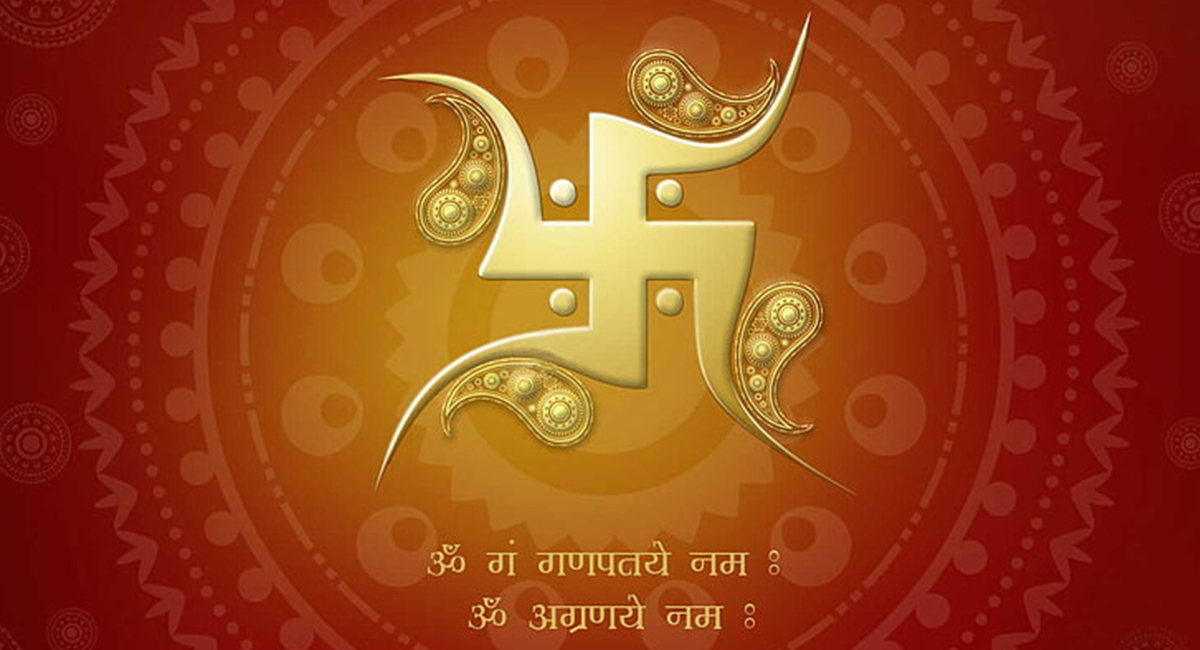The Swastika: A Sacred Symbol With A Complicated Past

Introduction
The Swastika is one of the oldest and most important symbols in the history of humanity. It has been sacred in various cultures for thousands of years, especially in Hinduism, Buddhism, and Jainism. But in the 20th century, Adolf Hitler and Nazi Germany misappropriated the Swastika and made it the symbol of war and genocide. This blog traces the history of the Swastika, its cultural and religious importance, and how it was adopted by Nazi Germany.
The swastika (or svastika) has been in use for over 10,000 years among the Indus Saraswati Valley civilizations. Similarly shaped symbols have been employed by other cultures like ancient Troy, and by the Native Americans in North America, for as long. The Sanskrit word swastika literally means “that which makes all well.” Su is “good” and asti is “to exist.” It occurs in one of the most common mantras of the Rg Veda [1.89.6], the oldest scripture of man. The swastika is regarded very highly as very sacred and divine by many religionists such as Hinduism, Buddhism, and Jainism and is still quite extensively used dating back to very ancient times through the current age. Zoroastrians have a similar sign used for spiritual purposes. The swastika is perceived as being favorable and is seen marked on religious things of reverence along with temple entrances, house front doors, and commercial enterprises. It also dominates most religious rituals to mark weddings, bless new houses, and start new enterprises or any such auspicious and optimistic endeavor. It is applied to a wide variety of other items of everyday use in most Asian nations, particularly India. Since the swastika has been used so extensively for so many years, it has been interpreted in numerous ways by practitioners of numerous Eastern religions.
Origins of the Swastika
The term “Swastika” is derived from the Sanskrit word “स्वस्तिक” (Svastika), which translates to “conducive to well-being” or “good luck.” The symbol itself has been discovered in archaeological remains that are more than 12,000 years old, and it was found in ancient cultures like the Indus Valley, Mesopotamia, China, and Europe. The Swastika has been found in some of the earliest representations on pottery, coins, and ancient writings.
The Swastika is a geometric shape made up of four arms bent at right angles. It has been employed as a symbol of prosperity, harmony, and spirituality in various regions of the world, including among Native American nations and ancient European cultures.
Hindu interpretations employed are: ❱
The four Vedas (Rig, Yajur, Sama, Atharva): the oldest Hindu scriptures
❱ The four objectives of life: Dharma, Artha, Kama, Moksha (right conduct, material wealth, mental and physical pleasure, and spiritual liberation)
❱ The limbs are also said to stand for the four seasons.
❱ The four directions (north, south, east, and west)
❱ The four yugas or ages (Satya, Treta, Dvapara, Kali)
❱ A solar symbol, radiating light in all directions
❱ An image of Lord Ganesha, the Remover of obstacles, the Repository of wisdom and who is always called upon at the beginning of any religious ritual in the form and sacred sound of Aum
The Swastika in Hinduism
Swastika, in Hinduism, is a symbol of auspicious meaning denoting divinity, good fortune, and cosmic order. It is traditionally drawn on the threshold of houses, temples, shops, and during religious rituals to call forth prosperity and protection against evil forces.
Hindus employ two versions of the Swastika:
- Right-facing Swastika (ओम्): Represents the sun, Lord Vishnu, and the positive and forward-moving cycle of life. It is being used extensively in Hindu ceremonies, festivals, and rituals to impart blessings.
- Left-facing Swastika (मोक्षिकास्वस्तिक): Symbol of Goddess Kali and tantric traditions. It is regarded as more esoteric and is frequently used in special spiritual and yogic practices.
The Swastika is also found prominently during Hindu celebrations such as Diwali, when it is painted on doors and money books to invite prosperity and divine energy. It is also utilized in wedding ceremonies, on sacred yantras, and as a good luck sign on new vehicles and homes.
Why is the Swastika linked to Ganesha?
Ganesha, the god of wisdom, prosperity, and new beginnings, is commonly associated with the Swastika. The symbol is said to personify his virtues of clearing impediments and good fortune. Swastikas are drawn by many followers in the beginning of new undertakings, when festivals are to be celebrated, or when performing pujas (ceremonies) to Lord Ganesha. The presence of Him and the Swastika portends the destruction of negativity and the advent of success.
Additionally, Lord Ganesha in most representations is sitting or standing alongside a Swastika, further emphasizing the notion that calling upon this symbol requests his blessings.
The Swastika in Other Cultures
The Swastika has been sanctified in civilizations for thousands of years:
- Buddhism: It symbolizes Buddha’s footprints and represents eternity and global harmony. The symbol appears frequently on Buddhist monasteries, books, and statues, especially in Tibet, China, and Japan.
- Jainism: It denotes the four possible states of existence: heavenly beings, humans, animals, and hellish beings. It is also an important part of the Jain religious symbol, often seen in temples and sacred texts.
- Ancient Europe: Found in Greek, Roman, and Celtic cultures as a solar and protective symbol. Ancient Greek pottery and Roman mosaics often depicted Swastikas as a sign of well-being.
- Native American Tribes: In pottery and fabrics to signify peace, harmony, and prosperity. The Swastika was included in the art and designs of several tribes, such as the Hopi and Navajo.
The Swastika was utilized in early Christian art and architecture, and also by the Vikings, who recognized it as the symbol of Thor’s hammer and cosmic order.
How Hitler and the Nazis Degraded the Swastika
Though it has religious themes, the Swastika was made notorious during the 20th century by Adolf Hitler’s and the Nazi Party’s use of it. Hitler was drawn to Indo-Aryan culture and thought the Swastika represented the so-called “Aryan race.” He had the Swastika turned 45 degrees and employed it as the party symbol beginning in the 1920s. During World War II, it was used as a symbol of racism, genocide, and oppression, which resulted in its prohibition in various nations after the war.
The Nazi Swastika bore no resemblance to the ancient spiritual significance of the Swastika. While the traditional Swastika is a symbol of life and prosperity, the Nazi Swastika was a symbol of a distorted ideology of supremacy and hate.
The Swastika in Modern Times: Controversy and Revival
Due to its association with the Nazi, people in the West consider the Swastika to be a hateful symbol. It is, however, a sacred and revered symbol in Hindu, Buddhist, and Jain cultures. People in most Eastern cultures are trying to restore its original meaning and raise awareness about its actual essence.
In recent times, attempts have been made to disassociate the Swastika from the Nazi connection. Historians and scholars point out that whereas the Nazi Swastika is a symbol of oppression, the original Swastika is a cultural and spiritual symbol of good luck. Some Hindu and Buddhist groups have initiated campaigns to create awareness of its positive connotation.
Conclusion
The Swastika is a very old and potent symbol of peace, prosperity, and spiritual development. Although its abuse by the Nazis created a dark period in history, it is important to see its original meaning in Hinduism and other ancient civilizations. Through knowledge of its historical and cultural backgrounds, we can value its sacred meaning and distinguish it from the political aberrations of the past.
The Swastika is still very much a part of Hindu, Buddhist, and Jain faith. Its application within temples, buildings, and ritualistic ceremonies is still generating trust, fortune, and positivity. The issue arises in informing the world about what it truly signifies and not losing its spiritual impact to past exploitation.







